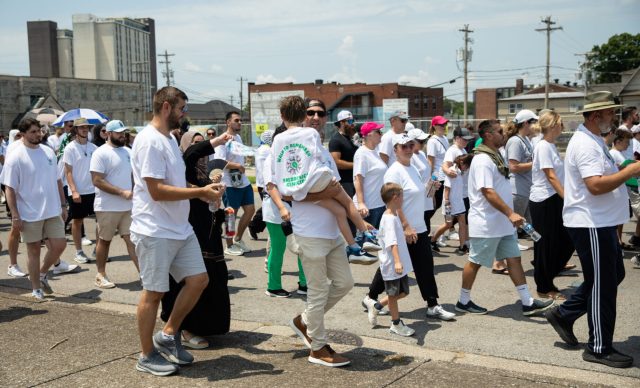Historic Shake Rag at heart of city’s latest improvement area
Published 12:15 am Sunday, April 25, 2021

- The city of Bowling Green’s Neighborhood Improvements Program has selected the historic African American Shake Rag district, extending from the Barren River southwest toward downtown Bowling Green, as its next zone for improvements, preservation efforts, neighborhood stabilization and affordable housing. The city hopes to start the work July 1 once it has received approval from the federal department of Housing and Urban Development. (Grace Ramey/photo@bgdailynews.com)
While the city of Bowling Green’s Neighborhood Improvements Program has already been carried out in three areas of the city, the latest area selected for the program is unique.
The NIP entails defining an area and gathering input from area residents and stakeholders on what projects are most needed in that area. The city then uses a combination of federal and local funds to make the improvements.
Trending
The fourth Bowling Green area elected for the NIP runs from the Barren River southwest toward downtown Bowling Green.
“This neighborhood is much different than the others” with more commercial corridors, The Medical Center campus and with it being a gateway to downtown, said Brent Childers, director of the city’s Neighborhood and Community Services department.
What makes the area even more unique is it is centered around the historic African American Shake Rag district. Shake Rag was added to the National Register of Historic Places in 2000, becoming Bowling Green’s first National Register district recognized for its importance to African American history. The current remnants of Shake Rag are what remains of what once were four prominent African American neighborhoods in the city.
Childers characterized it now as a “live-work-play neighborhood” as the city’s parks and recreation department also has a strong presence in the area with its headquarters, Roland Bland Park and the Kummer Little Recreation Center.
As in the other NIP areas, the city gathered input from area residents and stakeholders to determine what projects were most needed and desired.
The feedback included much discussion about the need for pedestrian and road improvements as well as housing improvements and efforts to acknowledge and protect the area’s history.
Trending
“A lot of it was related to Shake Rag,” Childers said.
There was a consensus that preservation efforts are important to people in Shake Rag “so people know what it is and what it means,” he said.
One of those stakeholders, Shake Rag Barber Shop owner Chris Page, welcomes the investment in the area.
“Everything that can be done, should be done,” he said.
Page said he told city officials the area needed investment in things like new sidewalks, as well as signage that tells the story of what was a vibrant African American community with many notable residents.
He said the NIP investments will “improve the quality of life for not only people who live in Shake Rag but across Bowling Green.”
The city plans to spend $1.5 million over two years in the area. Of that, $1.1 million is federal Community Development Block Grant funds and the rest is city funding.
Seventy percent of that amount is slated to be spent on neighborhood stabilization and affordable housing. That could entail fixing up dilapidated structures and other yet to be determined efforts.
Twenty percent will be spent on pedestrian/road projects such as new sidewalks and crosswalks.
“The area has a lot of sidewalks and some of them need care,” Childers said.
Ten percent will be allocated to neighborhood identity projects, such as signage and uniform lighting fixtures.
With the plans for the area now formulated, the city will submit the plans to the federal department of Housing and Urban Development for approval.
Childers said the city hopes to start the work July 1.
Previous areas selected for the NIP were around Reservoir Hill, the city portion of Census Block 112 between Old Morgantown and Old Barren River roads and Normalview Drive to the city limits and a parcel of city land between University Boulevard and Morgantown and Old Morgantown roads.






